Sensory Transduction and Reflexes
1/46
There's no tags or description
Looks like no tags are added yet.
Name | Mastery | Learn | Test | Matching | Spaced |
|---|
No study sessions yet.
47 Terms
what is transduction?
sensory systems are made up of receptors that convert various forms of energy into electrical signals
what are some different forms of transduced energy?
- mechanical: touch, pressure, joint position, muscle length and sound waves
- chemical: smells and tastes
- electromagnetic : light on the retina
- thermal
what are the 3 types of proprioceptors?
muscle spindles
golgi tendon organs
joint kinesthetic receptors
what do proprioceptors do?
monitor stretch in locomotory organs
provide information about the positions of different body parts- needed to coordinate movement
what do muscle spindles measure? where are they located?
changing length of a muscle
imbedded in perimysium between muscle fascicles
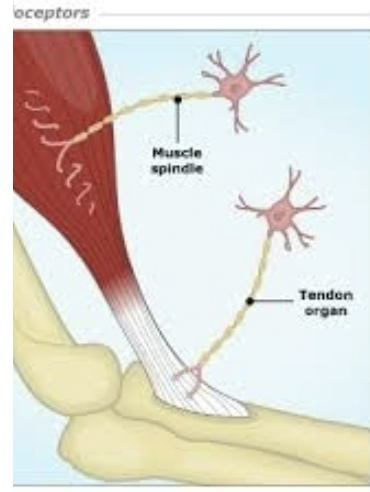
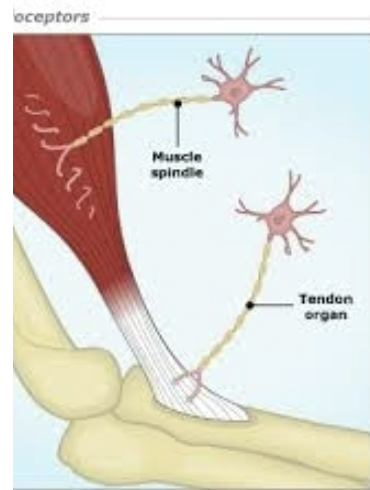
what do golgi tendon organs measure? where are they located?
monitor tension within tendons
located near muscle-tendon junction
what do joint kinesthetic receptors measure? where are they located?
sensory nerve endings within joint capsules
a mechanical stretch for example deforms membranes in the receptor regions of sensory neurons and develops a …?
generator or receptor potential
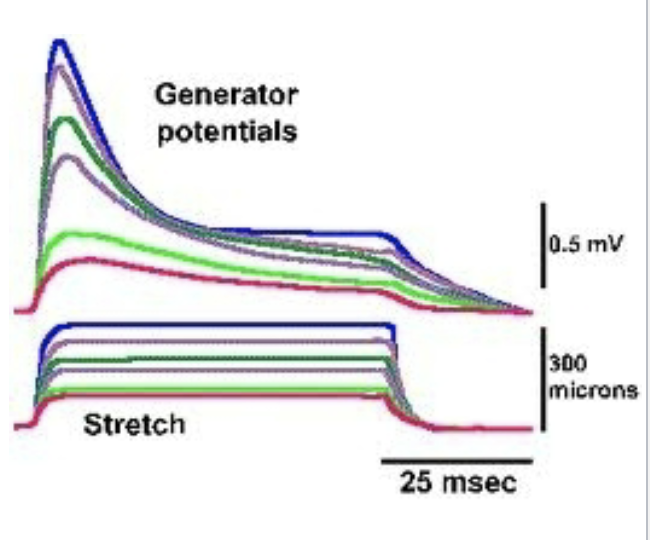
what does it mean that generator potentials are graded?
increasing the stretch on a mechanoreceptor produces increases in the generator potential amplitude
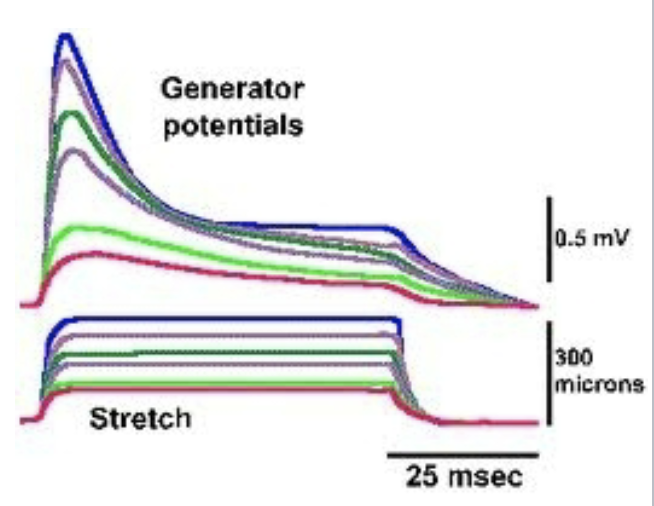
how are generator (receptor) potentials developed?
mechanical stretch deforms membranes in receptor regions of sensory neurons
this deformation causes Na+ channels to open
Stimulus intensity is encoded into action potential frequencies. Higher receptor potentials produce higher frequency action potentials. this is called…?
frequency modulated coding
how do we differentiate between soft taps and hard pokes?
higher frequency action potentials and release of more neurotransmitter to the next cell in line
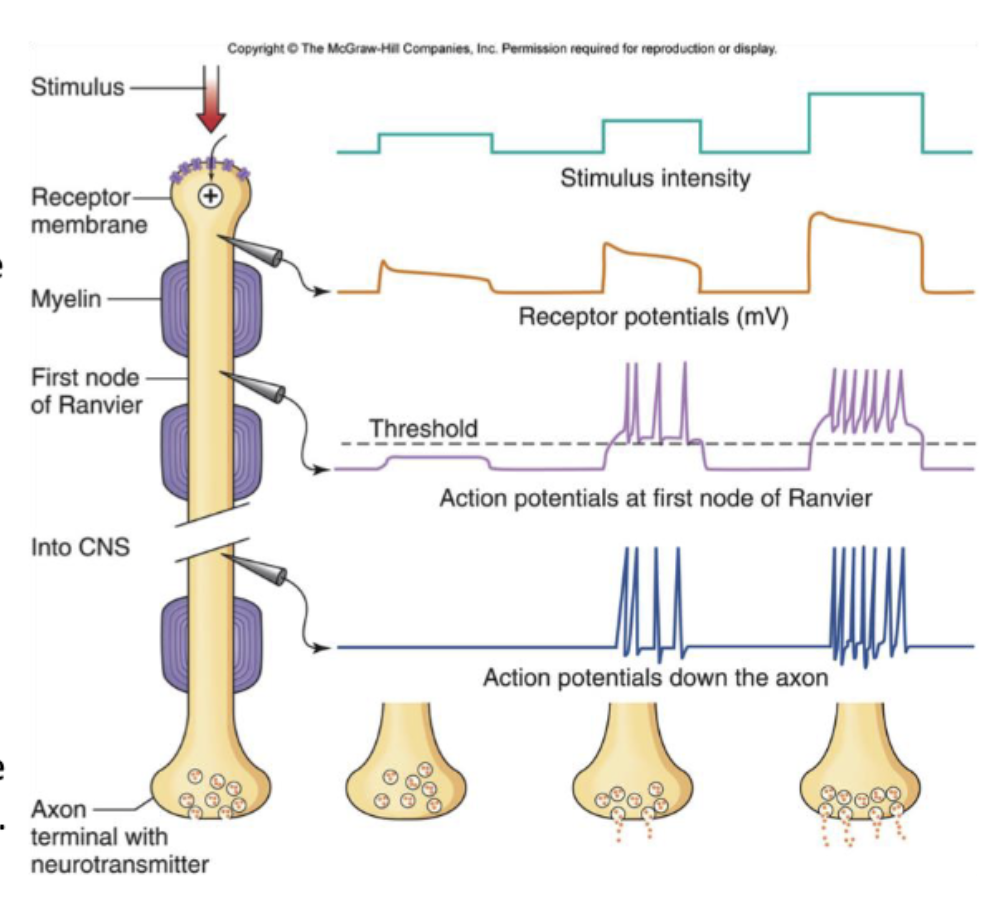
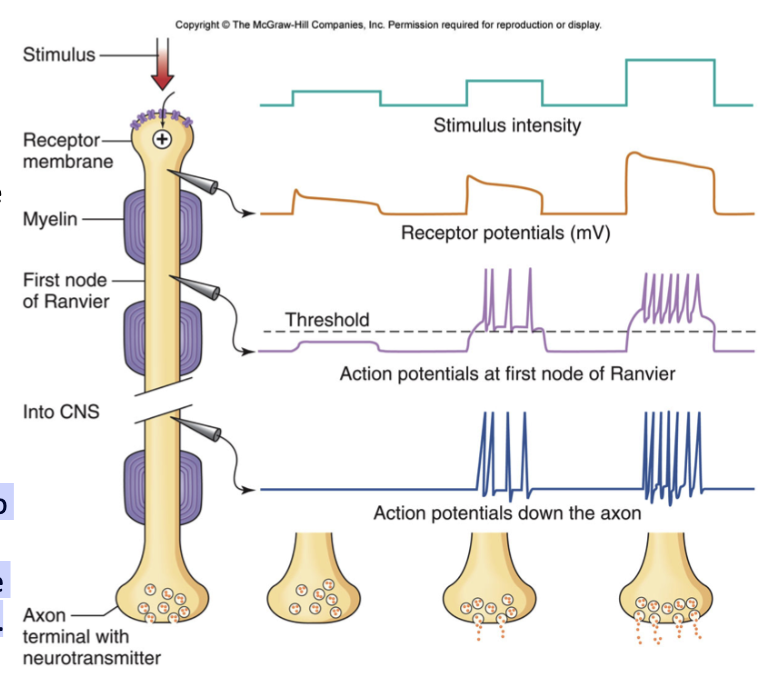
how do generator potentials get converted into action potential/
stronger stimulus will increase receptor potential amplitude since more receptor channels will open
there are coding/spike-generating regions downstream of receptor region where voltage-gated channels are located. Action potentials generated if receptor potential exceeds threshold
higher receptor potentials produce higher frequency action potentials
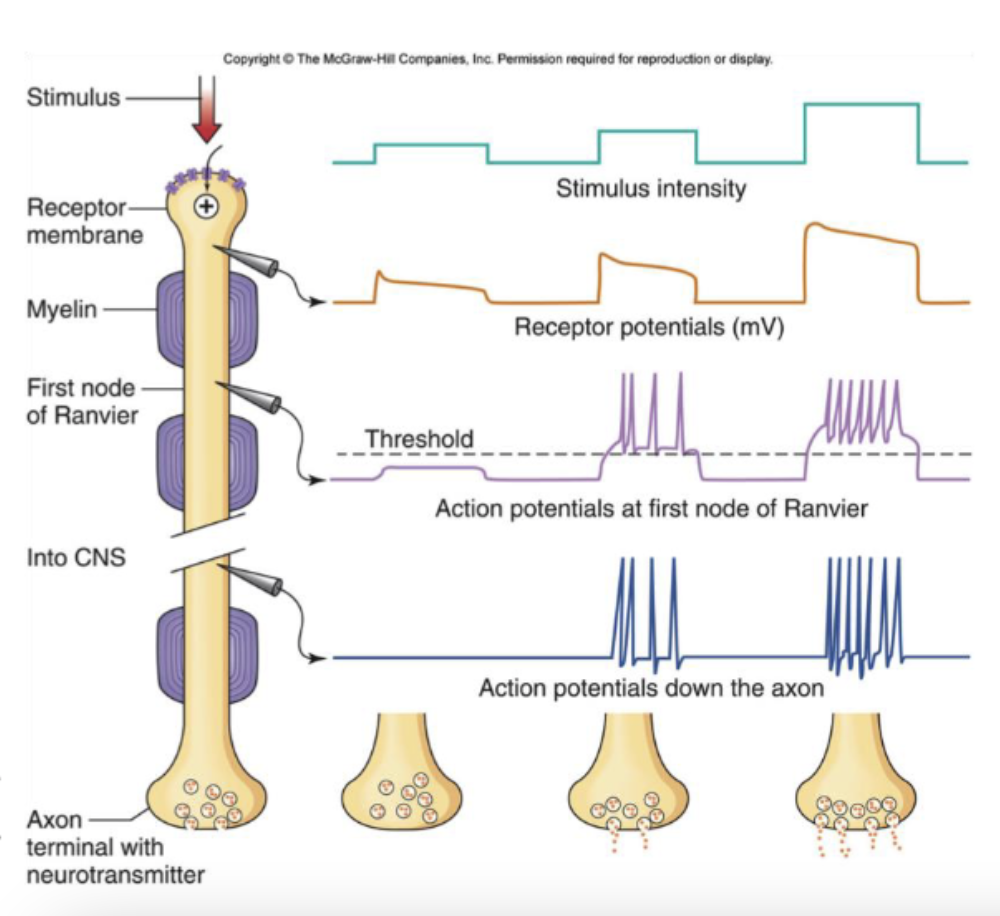
With a prolonged stimulus some sensory neurons undergo adaptation. What does this mean?
the generator potential gradually decreases with the result that the action potential frequency decreases
In other cases, action potential frequency decreases to zero even while the generator potential persists
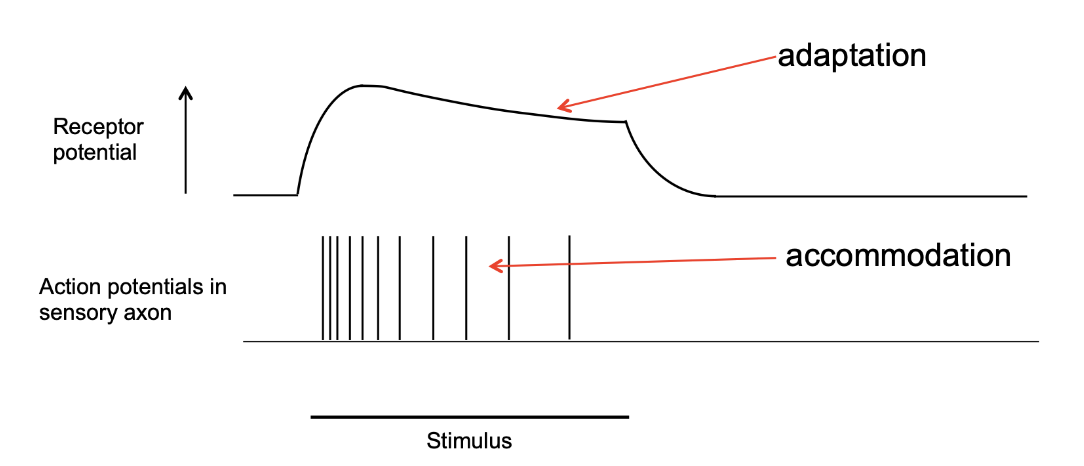
neurons within the spinal cord are arranged into
neuronal pools (w varying # of cells)
each neuronal pool receives input from
primary afferent neurons
a particular neuron in a neuronal pool within the spinal cord may receive what types of stimulation?
excitatory or inhibitory (or both)
ff the net effect of a particualr neuron in a neuronal pool is stimulatory, but not to threshold, the neuron may become transiently more excitable to incoming stimulation – this is known as
facilitation
what does facilitation do?
it will increase the probability of a postsynaptic firing if there is another excitatory stimulus
what are examples of pathways in neuronal pools?
divergent: 1 presynaptic neuron branches to affect larger number of postsynaptic neurons
convergent: many presynaptic neurons converge to influence smaller number of postsynaptic neurons
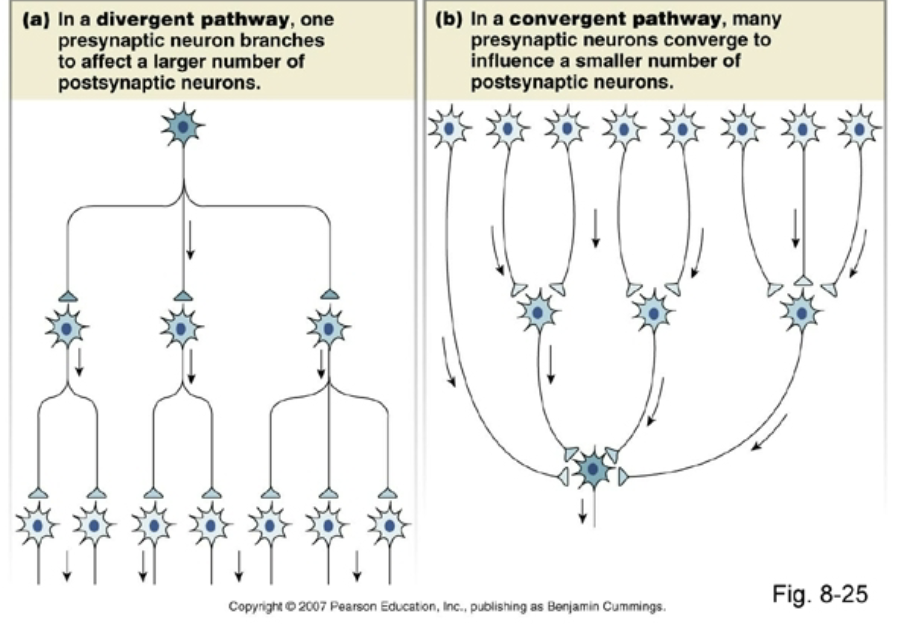
The axon terminals of a sensory neuron tend to be concentrated in the center of stimulatory fields within a neuronal pool. What are the zones?
discharge zone
facilitated zone
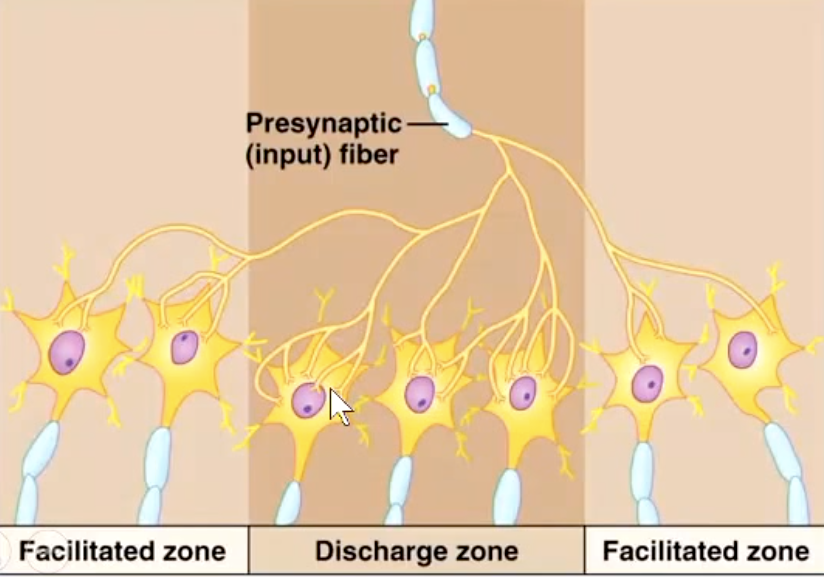
what happens in discharge zone within a neuronal pool?
central output neurons that are more likely to reach threshold because of multiple synaptic connections with branches of the presynaptic neuron
*automatically fire because of multiple pre/postsynaptic connections
what happens in facilitated zone within a neuronal pool?
peripheral output neurons that may be depolarized but not to threshold – these neurons are more excitable to other incoming stimuli.
what are the layers of the spinal cord?
outer: white matter containing myelinated neurons (carry signals up/down cord)
inner: gray matter containing mostly non-myelinated neurons (interneurons)
what are interneurons?
non-myelinated neurons found in inner gray matter of spinal cold
t/f: the white matter layer of the spinal cord has dorsal and ventral horns.
false. the inner grey matter does.
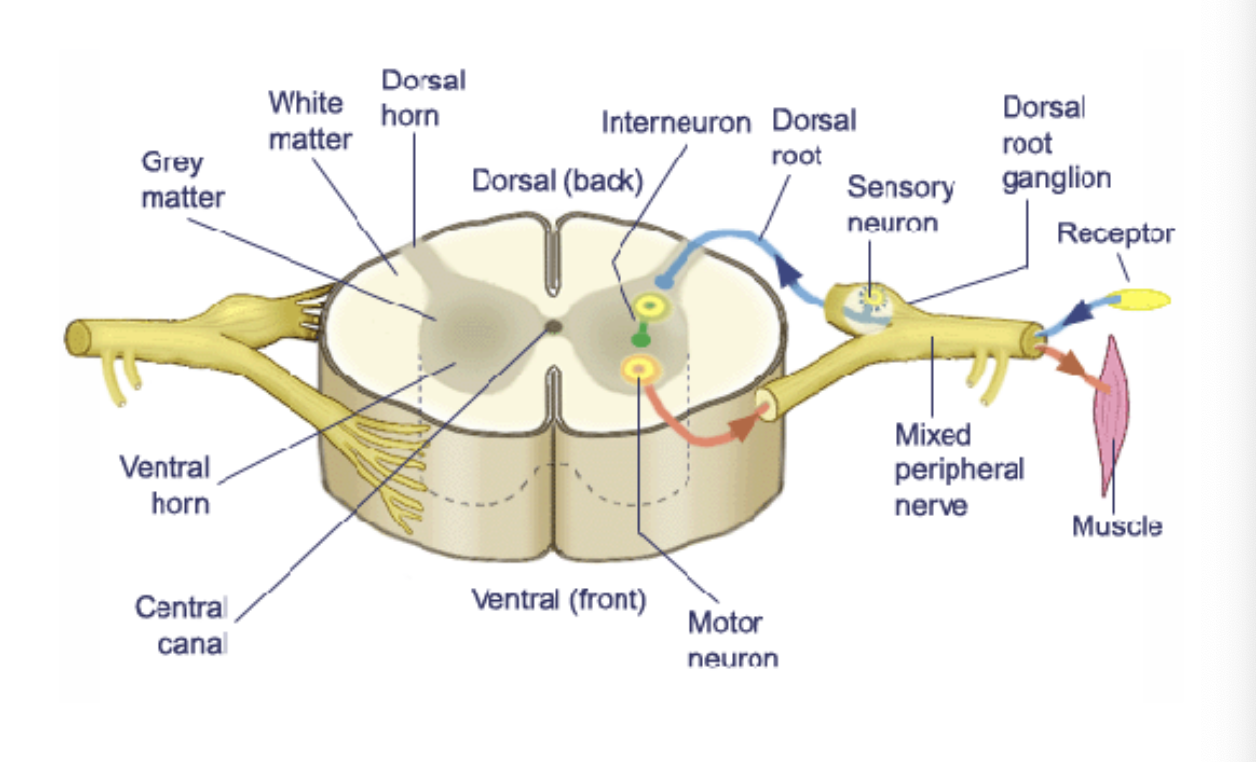
each spinal nerve communicates with the cord via 2 pathways. what are they?
dorsal and ventral roots
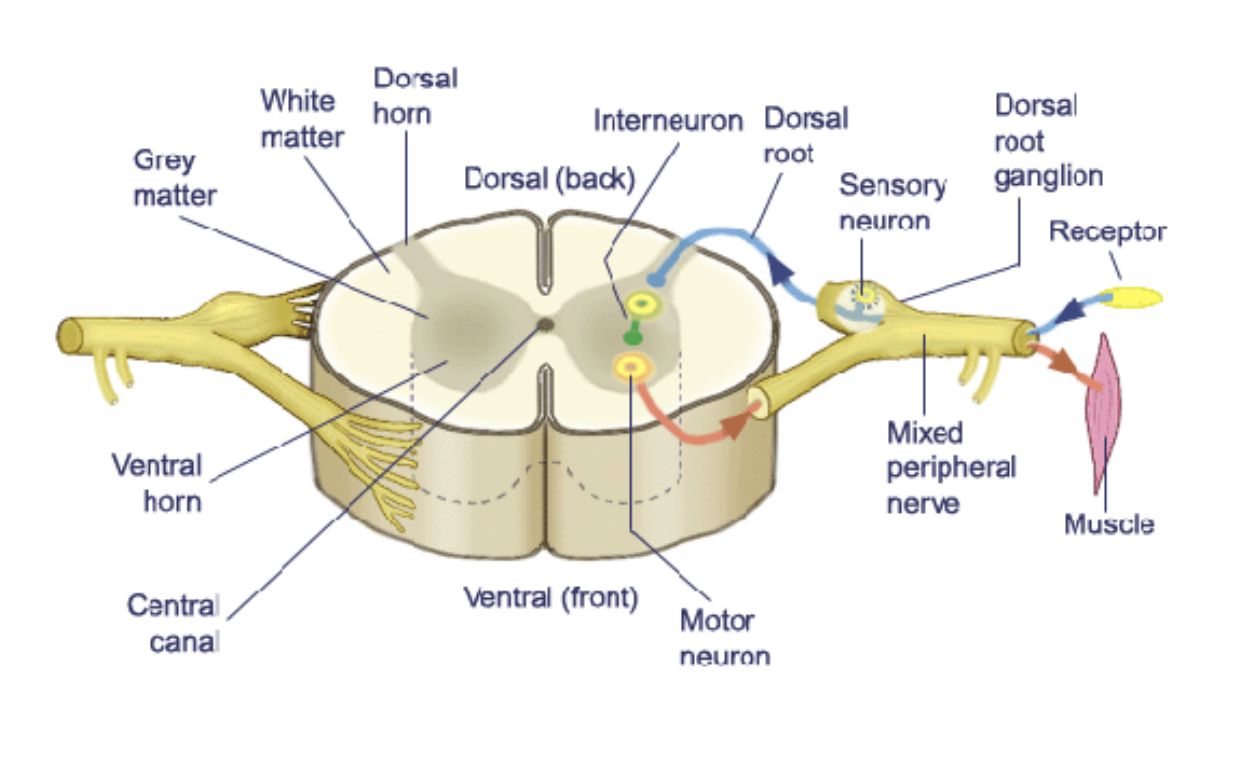
what is a reflex?
an automatic response to a stimulus (eg. pain stimulus applied to the hand causes flexion/withdrawal)
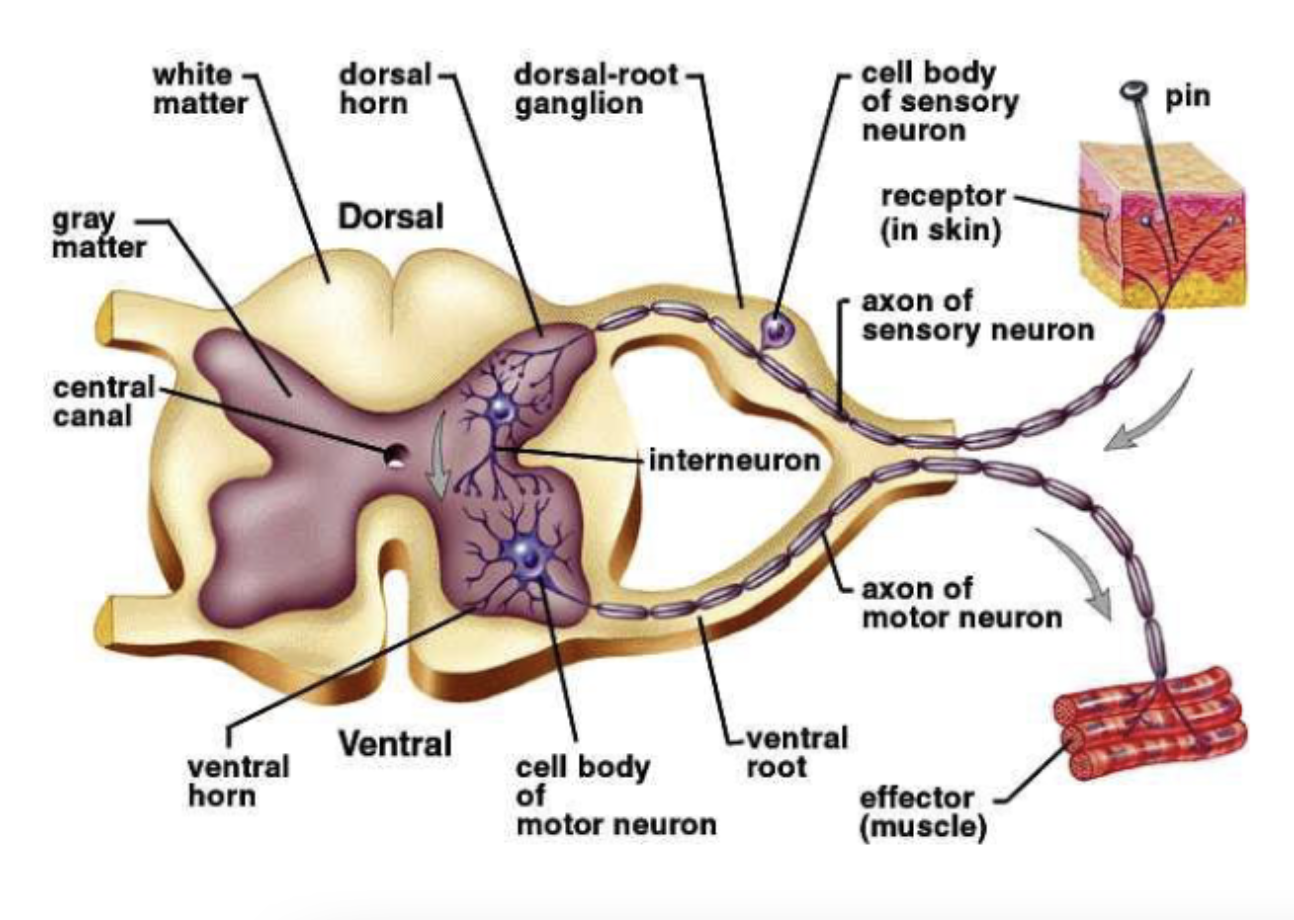
how do reflexes work? (describe the neural pathway a pain stimulus causes in the spinal cord)
pain stimulus carried to cord via sensory or primary AFFERENT neuron
afferent neuron synpases with an interneuron
interneuron synpases with an alpha-motor EFFERENT neuron in the ventral horn of the grey matter
efferent neuron leaves cord via ventral root and terminates in effector organ (eg. muscle)
muscle contracts to withdraw hand from painful stimulus
where does the afferent neuron enter the spinal cord? where is its soma located?
through dorsal root
soma located in dorsal root ganglion (enlarged region in dorsal root containing somas of many afferent neurons)
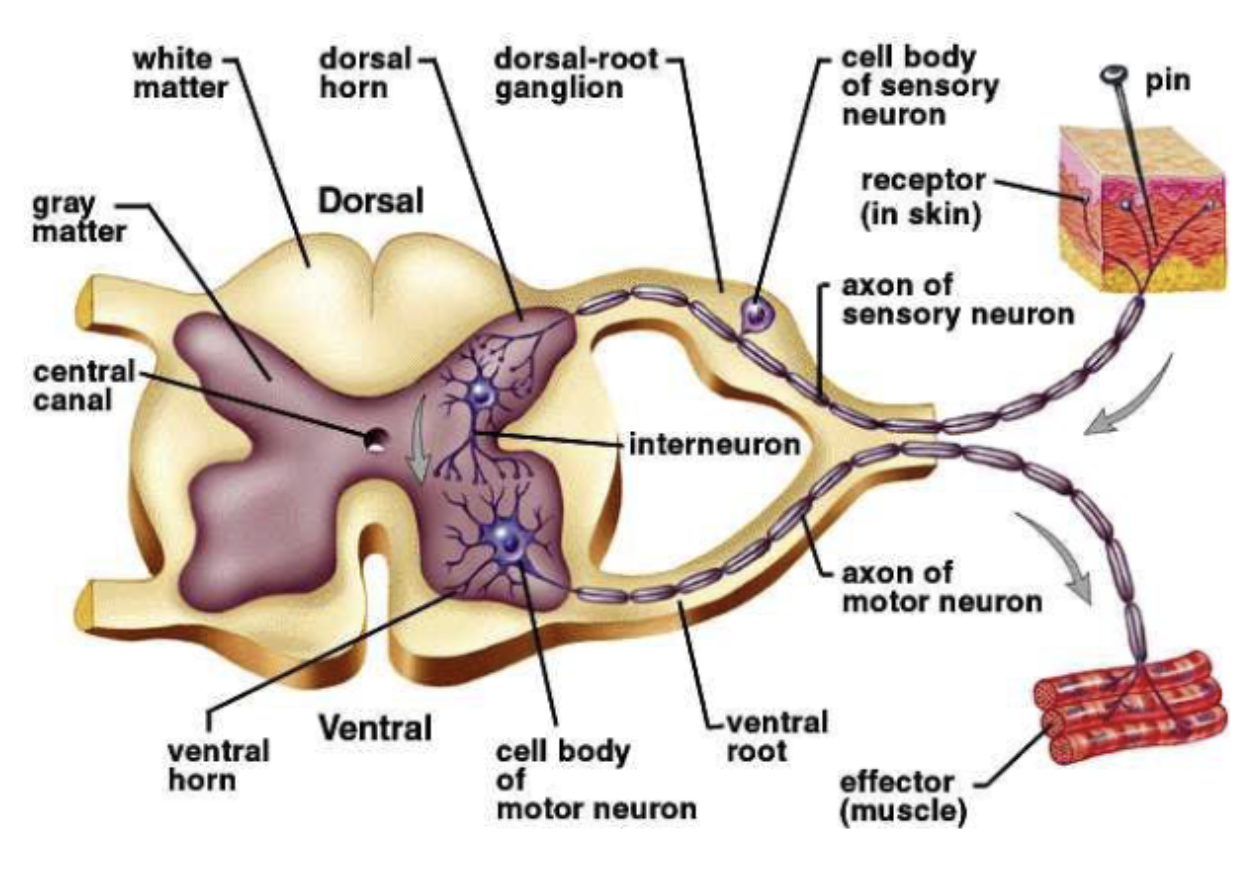
what is a reflex arc?
arrangement of afferent, efferent, and interneurons that synapse in sequence to cause reflex response
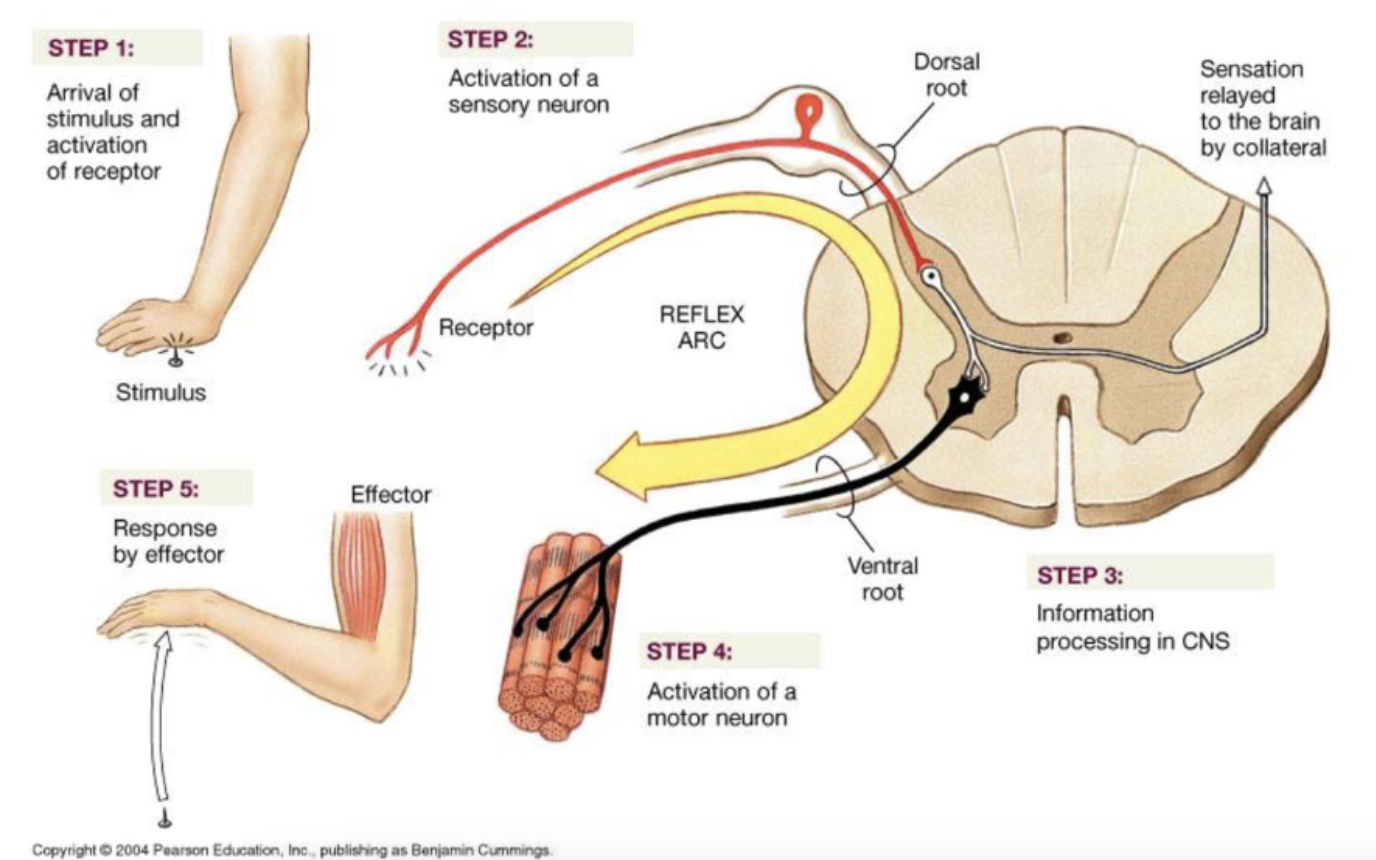
what type of neuron (multipolar, bipolar, pseudounipolar) are afferent (sensory) vs efferent (motor) neuorns?
efferent (motor) = multipolar
afferent (sensory) = pseudounipolar
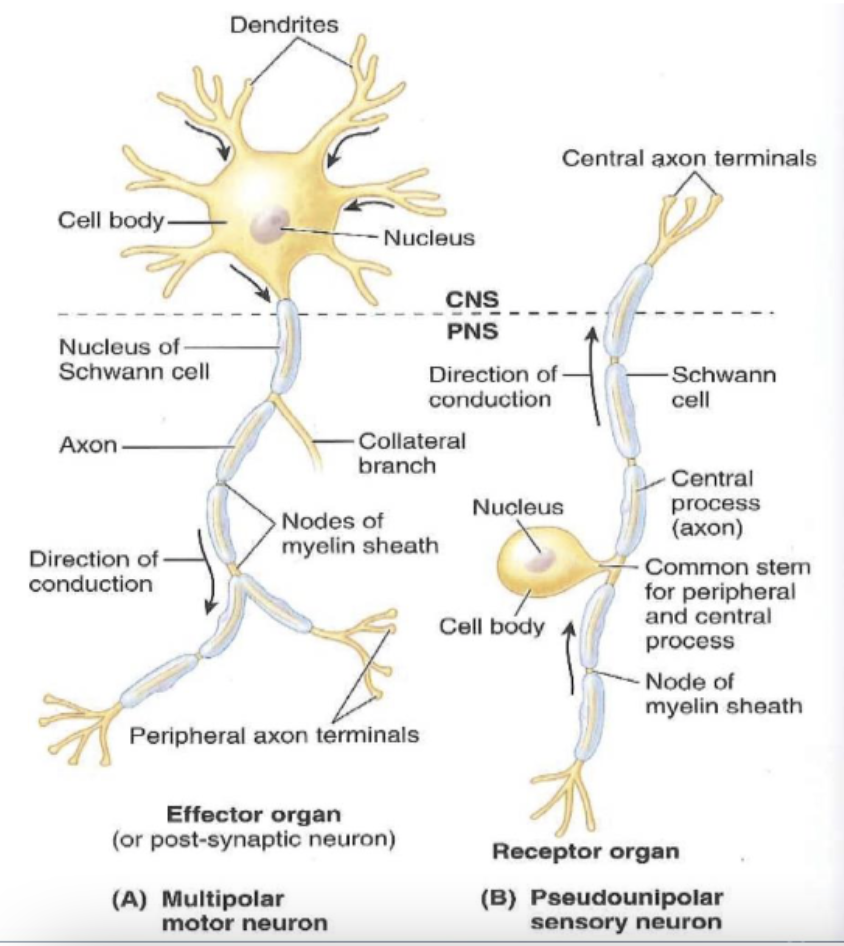
interneurons are also known as
association, relay, or internuncial neurons
what do interneurons do?
create neural circuits, enablingcommunication between sensory and motor neurons and with the central nervous system (CNS)
characteristics of interneurons?
short, act locally OR longer axons, relay information between different regions of CNS
excitatory or inhibitory
t/f: interneurons can connect circuits over the entire length of spinal cord
true
Peripheral muscles such as those controlling the arms and legs exist in antagonistic pairs- e.g. a flexor and extensor such as the biceps brachii and triceps. For an agonist to contract, the antagonist must relax.
How is this accomplished?
reciprocal innervation or inhibition
what is reciprocal innervation or inhibition?
agonist is stimulated while the antagonist is simultaneously inhibited
excitatory and inhibitory interneuron activated by same afferent neuron
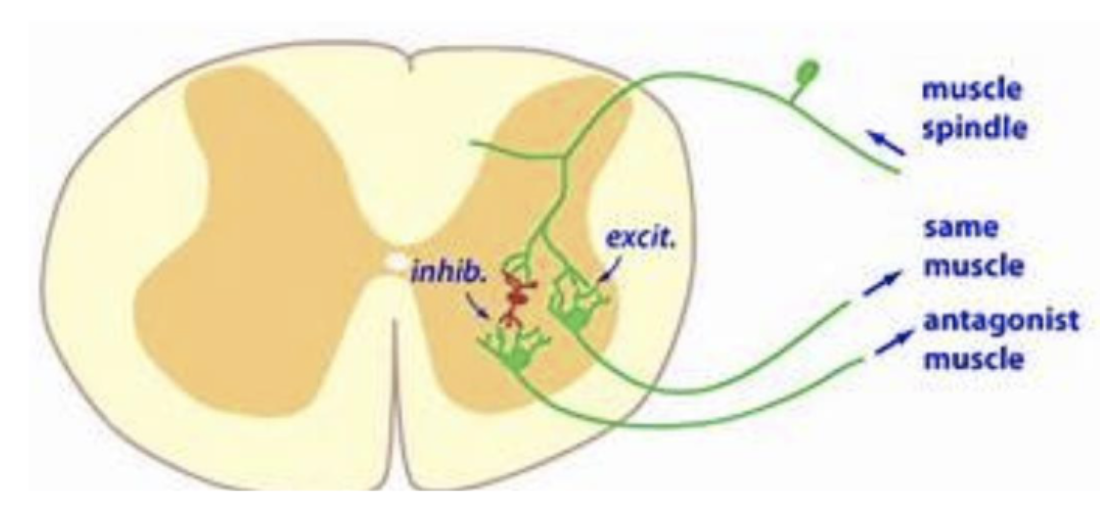
what are the types of interneurons?
ipsilateral vs contralateral
intersegmental
propriospinal neurons
ipsilateral vs contralateral interneurons (what does this allow?)
ipsilateral: connect afferents to efferents on the SAME side of cord
contralateral: connect afferents to efferents on the OPPOSITE side of cord
same afferent signal elicits responses on both sides of the body
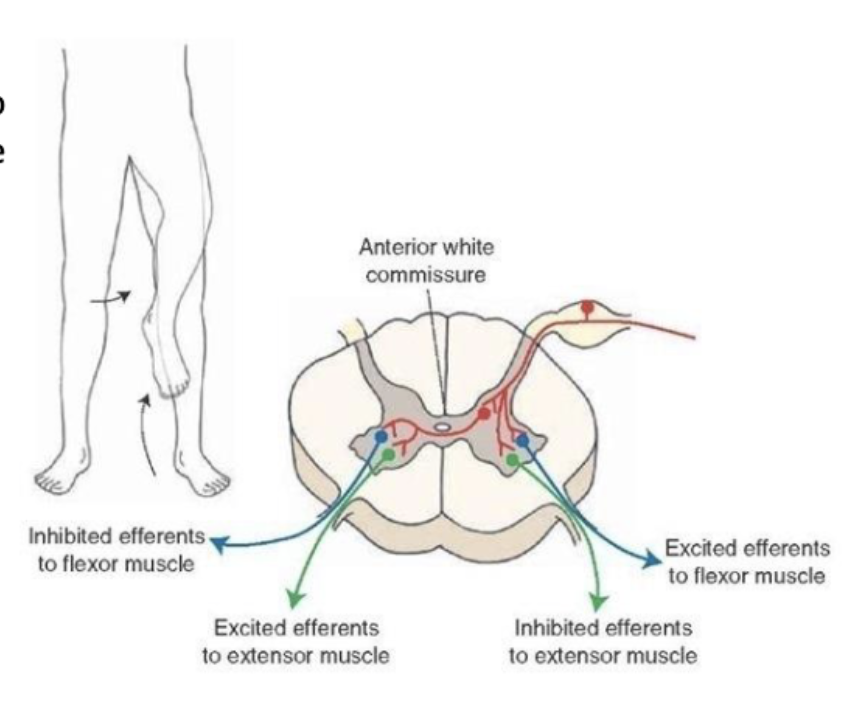
what do intersegmental interneurons do?
(ascending or descending) carries afferent signals to efferents located one or more spinal segments above or below its origin
can excite/inhibit multiple levels of spinal cord both ipsilateral and contralateral
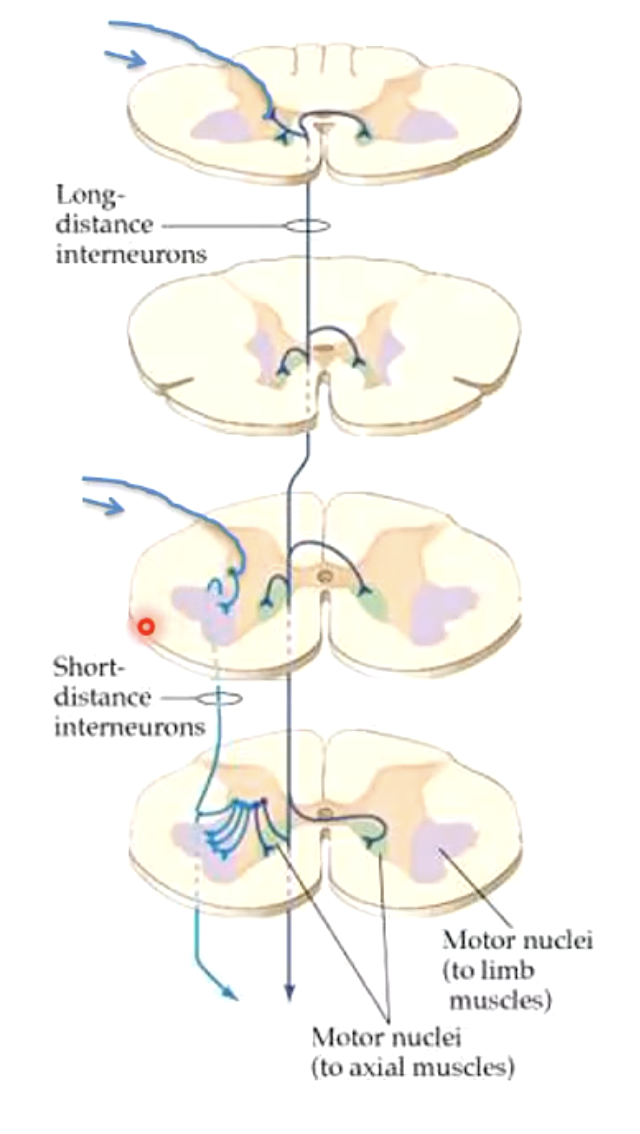
shorter intersegmental interneurons typically travel within what region of the cord? longer intersegemental interneurons?
shorter → typically travel entirely within gray matter
longer → originate in gray matter but may leave to travel to distant cord segments within fasciculus proprius (region of white matter adjacent to gray matter)
what are propriospinal neurons?
myelinated
longer intersegmental interneurons originate in the gray matter but may leave the gray matter and travel to distant cord segments within the fasciculus proprius, a region of white matter adjacent to the gray
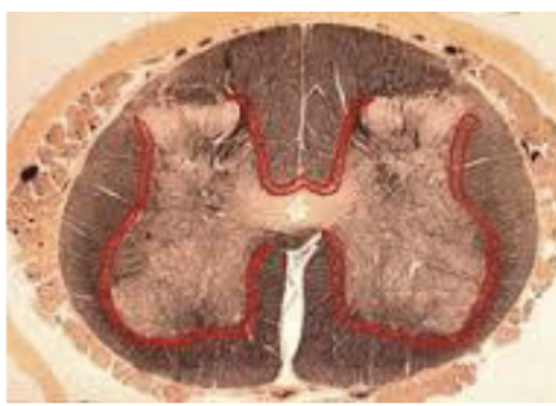
red region?
fasciculus proprius: region of white matter adjacent to the gray
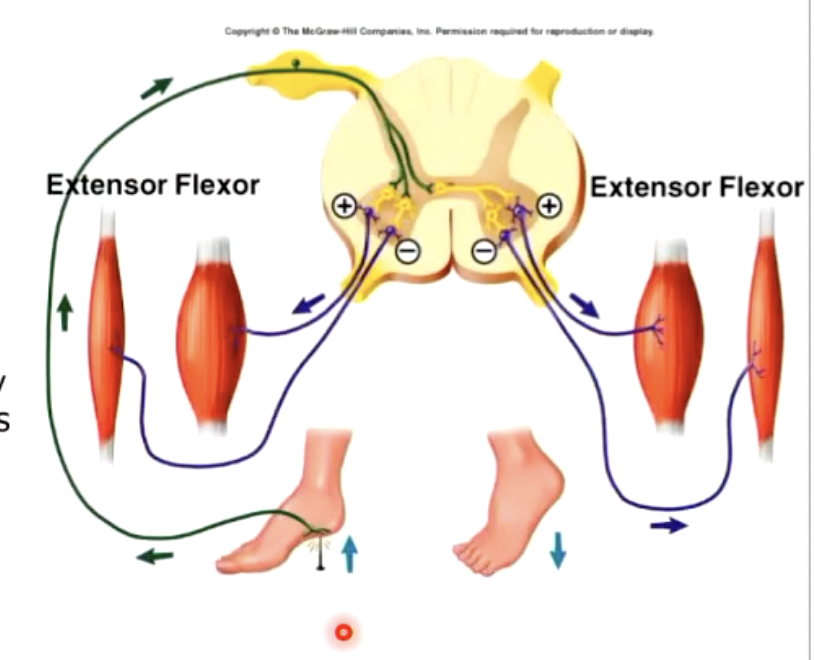
describe what happens in the crossed-extensor reflex
type of double reciprocal innervation
step on tack
foot withdrawn by contraction of flexors and relaxation of extensors
contralateral leg extend to support body
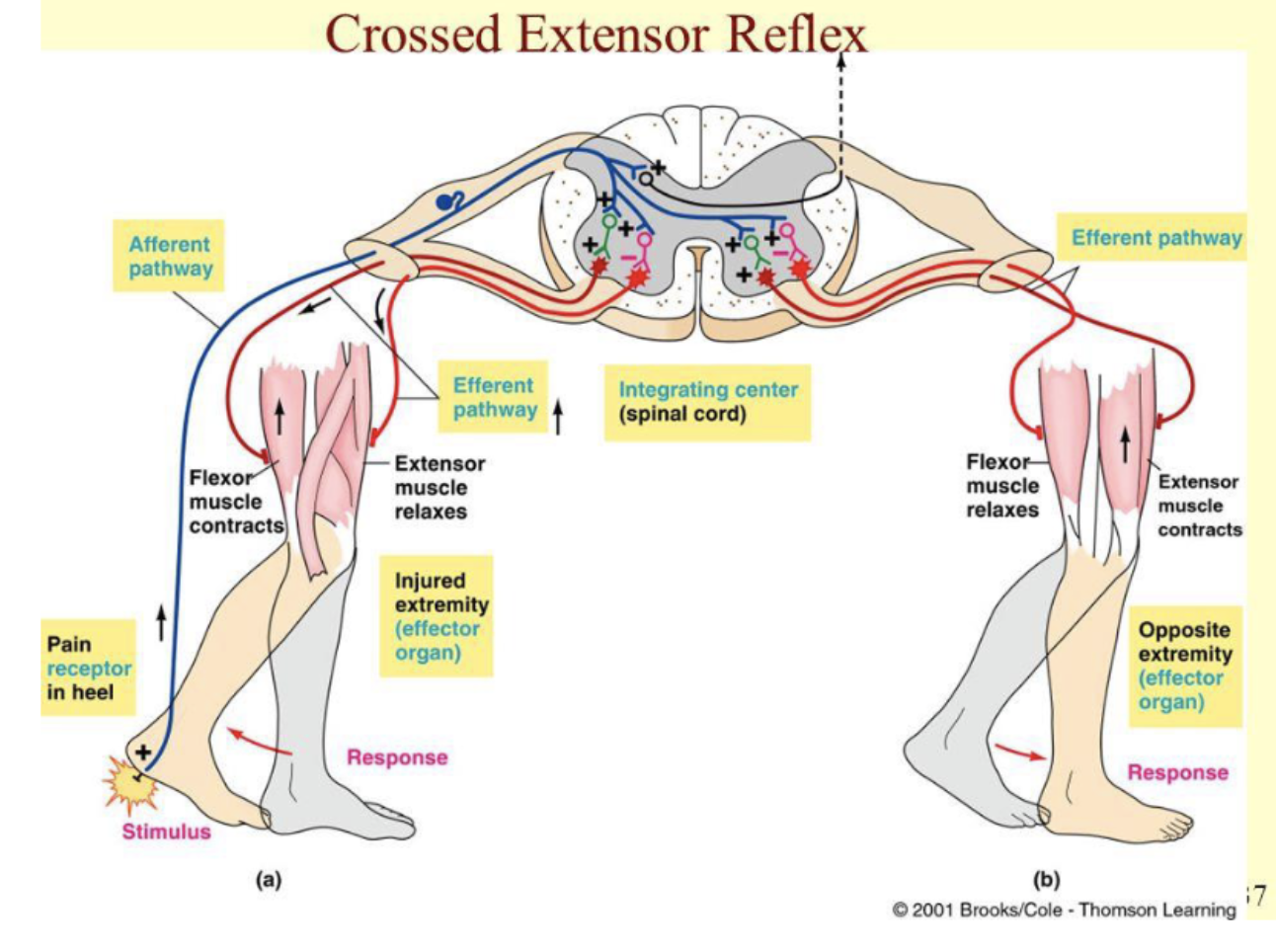
what type of interneurons are involved in crossed-extensor reflex?
intersegmental
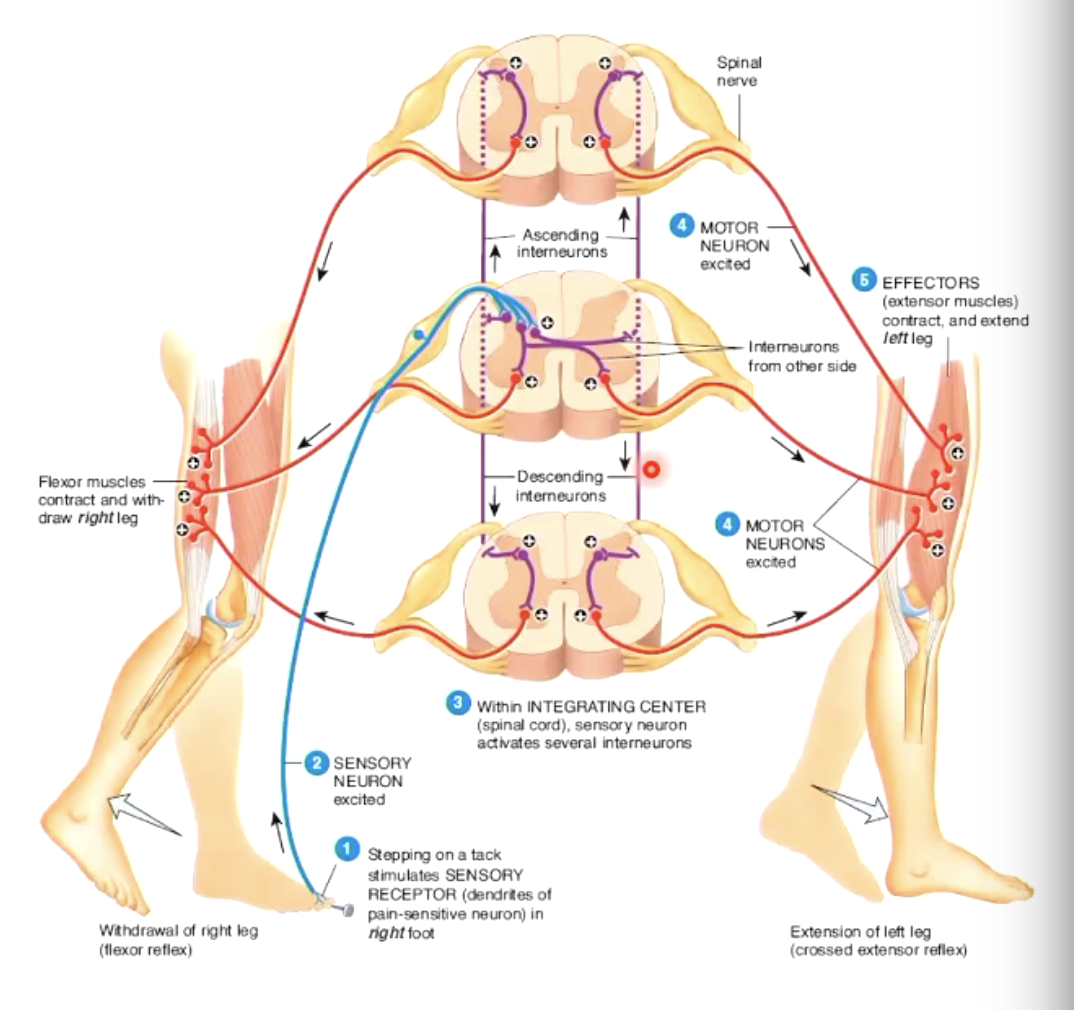
every afferent fiber is attached to a second order afferent fiber. what do these second order fibers do?
carry ensory information fromprimary afferent to cognitive centers in the brain
myelinated (rapid conduction velocities)
run in tracts in white matter of cord